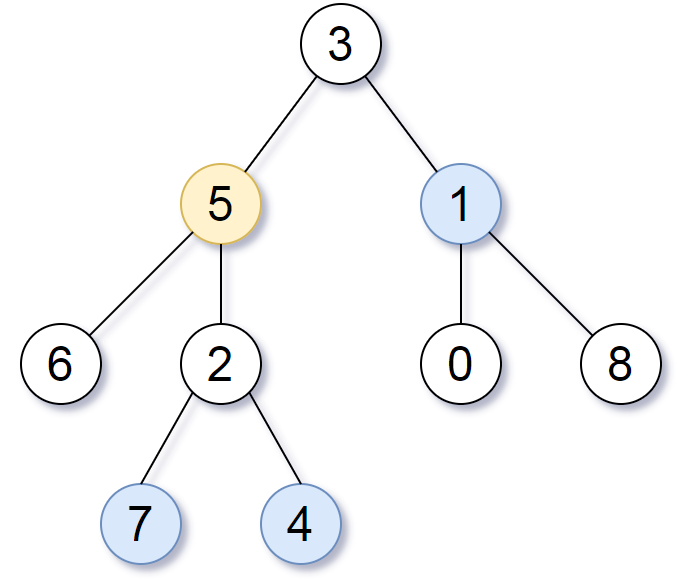Given the
root of a binary tree, the value of a target node target, and an integer k, return an array of the values of all nodes that have a distance k from the target node.You can return the answer in any order.
Example 1:

Input: root = [3,5,1,6,2,0,8,null,null,7,4], target = 5, k = 2
Output: [7,4,1]
Explanation: The nodes that are a distance 2 from the target node (with value 5) have values 7, 4, and 1.
Example 2:
Input: root = [1], target = 1, k = 3
Output: []
Constraints:
The number of nodes in the tree is in the range
[1, 500].
0 <= Node.val <= 500All the values
Node.val are unique.
target is the value of one of the nodes in the tree.*
0 <= k <= 1000算法思路:
有三种情况,都容易忽略: 1. 儿子节点 2. 所有父节点路劲上 3. 兄弟节点路径上。而第三种情况要搜另一边的儿子节点(左右不确定)要用visited记录,而且不一定是父亲的兄弟节点,可能爷爷的非父亲的儿子节点。
既然不是单向搜索,不妨转换为图,然后用计算距离BFS模板,只要用map来记录某节点的父亲节点或者增加一个域。BFS中for neighbor in [node.left, node, right, node.parent]
注意事项:
- root的parent是None,所以从root去赋值parent,而不是从parent root给儿子赋parent
- Line 13 node.left, node.right, node.parent都可能为None,所以Line14要加not neighbor
- BFS从target开始而不是root
Python代码:
1 | def distanceK(self, root: TreeNode, target: TreeNode, k: int) -> List[int]: |
算法分析:
时间复杂度为O(n),空间复杂度O(n)



